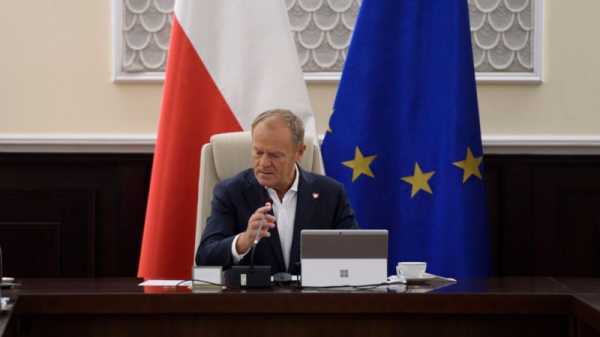
The ruling PiS’ multi-party alliance will remain the strongest political force in the country but will make losses compared to previous elections and fail to form a majority, Europe Elects polling average shows.
The Europe Elects polling average suggests that the national-conservative United Right (ZP) multiparty alliance, led by the ruling PiS (ECR) party, would remain the strongest force with about 36.7%.
However, that would be seven points less than in 2019 and, more importantly, insufficient for a majority in the powerful lower house.
PiS has led the government since 2015 and frequently clashes with other EU member states due to its ultra-conservative and anti-democratic course.
The centre-right Civic Coalition (KO), led by former European Council President Donald Tusk, is the main opponent of PiS. The multiparty alliance consists of the centre-right Civic Platform (EPP), the liberal Nowoczesna (Renew Europe) and the Greens and is polling at 28%, insignificantly higher than its 2019 election result.
The centrist Polska 2050 (PL2050) party (Renew Europe) around Szymon Hołownia is set to run for the first time in this upcoming election, currently polling at 8% on average – well above the 5% threshold for single parties. The far-right Konfederacja alliance is polling 8.6%, about 1.8 points above their 2019 result.
The alliance includes, for example, the monarchist-libertarian Nowa Nadzieja, founded by infamous former MEP Janusz Korwin-Mikke, the right-wing extremist Ruch Narodowy, and the Confederation of the Polish Crown. The anti-immigration and anti-EU Konfederacja have been hostile to PiS and the more liberal opposition parties.
The PSL-led Polish Coalition (KP-PSL) multiparty alliance is polling at 6%, slightly below the 8% threshold for multiparty alliances. The centre-left Lewica (S&D) alliance is polling 9.1%, about 4 points below their 2019 result.
If these polling numbers were to repeat in an election, a tricky government coalition phase could lie ahead. Neither a KO-Lewica-PL2050 coalition nor a ZP government would have a stable majority in the Sejm, whose seats are allocated based on proportional representation.
Exemptions to the thresholds mentioned above exist only for minority parties; typically, the Komitet Wyborczy Mniejszość Niemiecka, representing the German minority, wins one of the 450 seats.
In a scenario where PSL would run alone and overcome the single-party threshold, KO, PSL, PL2050, and Lewica could form a majority against PiS and Konfederacja. While this alliance would be ideologically diverse, the parties have proven that they can work together against PiS. In February, the four formed the Pakt Senacki 2023, an agreement that assumes close cooperation regarding the conduct of the upcoming Senate election campaign. The Senate is elected using first-past-the-post voting in single-member districts, which encourages broad alliance-building.
Source: euractiv.com



